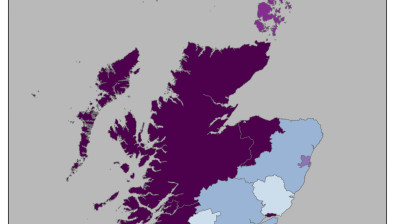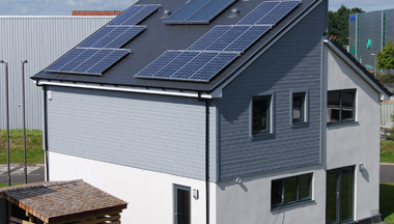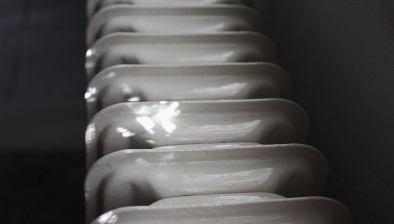Improving housing stock helps 97,000 households move out of fuel poverty
 A long term improvement in the energy efficiency of housing stock coupled with a substantial drop in the price of domestic fuel has seen a drop in Scotland’s fuel poverty rates, though campaigners have warned that the job is far from over.
A long term improvement in the energy efficiency of housing stock coupled with a substantial drop in the price of domestic fuel has seen a drop in Scotland’s fuel poverty rates, though campaigners have warned that the job is far from over.
The latest Scottish House Condition Survey (SHCS) from the Scottish Government revealed that fuel poverty rates declined by about 4 percentage points last year compared to 2014, the equivalent to around 97,000 fewer households living in fuel poverty.
Just over half (2.3 percentage points) of the reduction can be attributed to the lower price of domestic fuels while around a third (1.3 points) can be attributed to improvements in the energy efficiency performance of the housing stock. The remaining (0.6 points) over the period can be explained by higher household incomes.
Households using oil as the primary heating fuel saw most improvement in fuel poverty levels in the last year, in large part due to the falling price of oil. Just over a quarter of them are now assessed as fuel poor (26 per cent, down from 49 per cent in 2014), which is comparable to the level of fuel poverty among those using mains gas (27 per cent).
Similarly, rural households have gained disproportionately in the last year with fuel poverty levels falling 15 points to 35 per cent. Rural fuel poverty is now close to the level of fuel poverty in urban areas (30 per cent in 2015) and the difference between the two is no longer regarded to be statistically significant.
However the survey found that 30.7 per cent of households, around 748,000, were fuel poor and 8.3 per cent, 203,000 households, were living in extreme fuel poverty in 2015.
It added that fuel poor households are more likely to report difficulties staying warm in winter, with 27 per cent of them saying that their heating keeps them warm in winter “only sometimes” (20 per cent) or “never” (8 per cent), compared to 21 per cent of all other households. A total of 9 per cent of fuel poor households report that they still cannot afford to heat their home.
The Existing Homes Alliance, which campaigns for the transformation of Scotland’s housing stock, said the statistics have again demonstrated the urgent need for a significant increase in funding for home energy efficiency.
Welcoming the 4 per cent, reduction in fuel poverty, the Alliance said that given the “small drop” is partly related to lower fuel prices, it is “at best a temporary situation”.
The Alliance is urging ministers to adopt the recommendation of the Fuel Poverty Strategic Working Group that all homes should be brought up to at least an EPC band C by 2025.
Lori McElroy, chair of the Existing Homes Alliance, said: “We know investment in existing energy efficiency programmes is working, but progress is still too slow, and the thousands of people still living in fuel poverty can’t afford to wait. Each year these figures remind us how much work is still to be done before every household in Scotland lives in a warm, dry and healthy home that they can afford to heat.
“Important as good standards are for new properties, we need a substantial commitment to energy efficiency as a true national infrastructure priority to make sure we are not still having this debate in ten years’ time. It simply cannot be acceptable for almost a third of households still to be struggling to pay fuel bills and heat their homes in a country as rich as Scotland.”
Lori McElroy added: “This is the year by which the Scottish Government was legally required to eliminate fuel poverty, and we know ministers are as disappointed as we are that that target was not met, despite some progress, as these figures show all too clearly.
“Many of the pieces are already in place for a renewed focus on fuel poverty and home energy efficiency. We know next year a new fuel poverty strategy will be published, which must set an ambitious but achievable target for ending fuel poverty in Scotland. With sufficient investment the Scottish Government can help ensure that all homes in this country are up to at least the standard set by EPC Band C, and that fuel poverty becomes a thing of the past in this country.”
The Scottish House Condition Survey provides statistics on fuel poverty, energy efficiency, the condition of housing, the Scottish Housing Quality Standard (SHQS) and other key descriptors of the occupied housing stock in Scotland for the year January to December 2015.
The survey revealed a long term improvement in the energy efficiency of the housing stock, though the change in the last year proved to be less evident.
It found:
Housing quality indicators remain stable at 2014 levels















